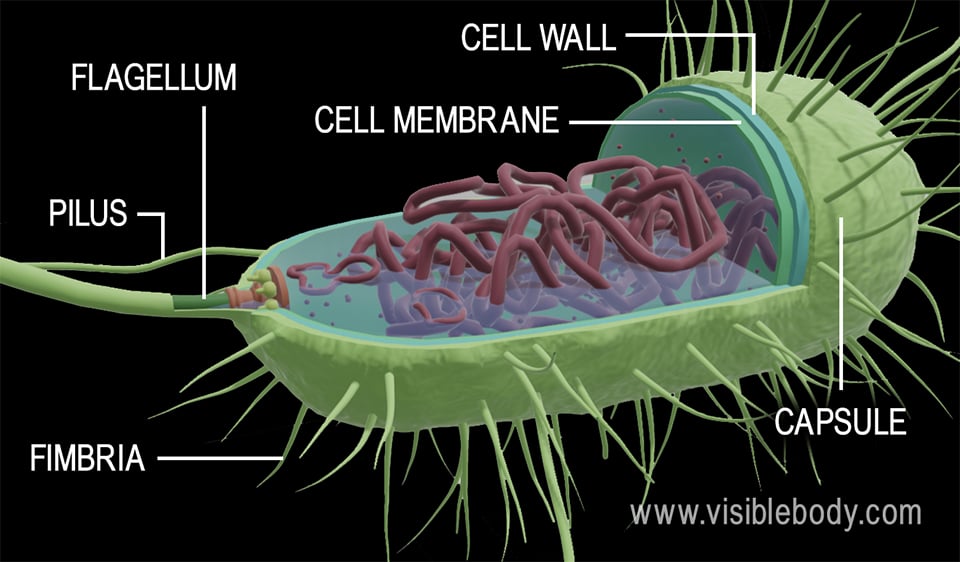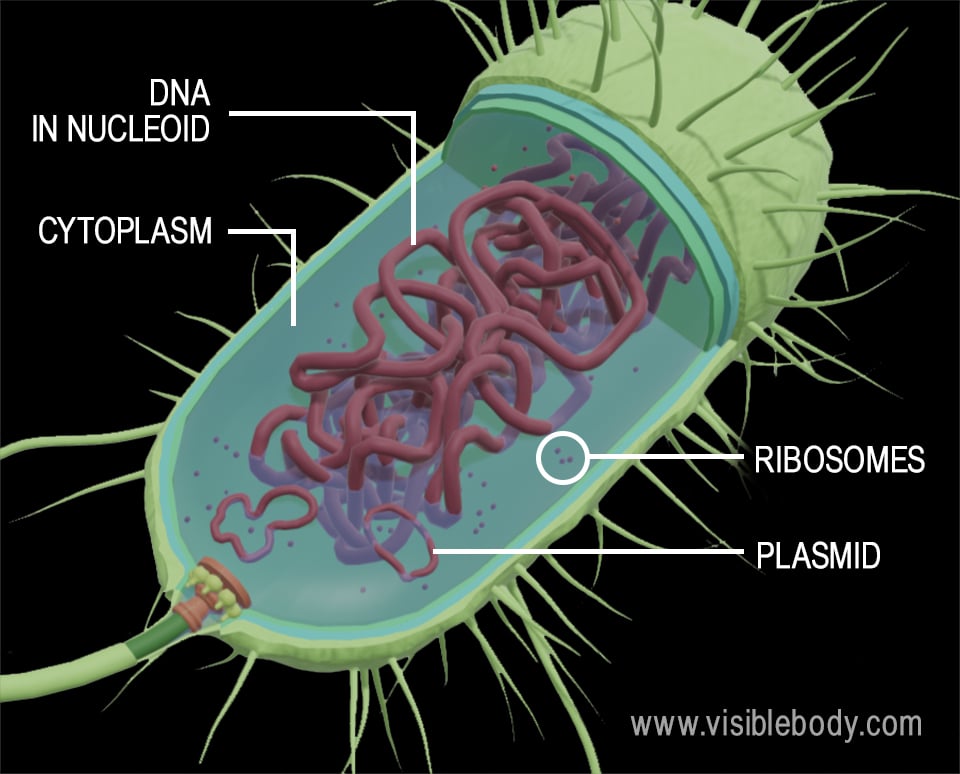There are two general categories of cells: prokaryotic and eukaryotic. Sometimes, organisms are referred to as prokaryotes or eukaryotes, based on the type of cell(s) that compose them.
Prokaryotic cells comprise bacteria and archaea. Their genetic material isn’t stored within a membrane-bound nucleus. Instead, it is stored in a nucleoid that floats in the cell’s cytoplasm. Prokaryotic cells are normally smaller than eukaryotic cells, with a typical size range of 0.1 to 5 μm in diameter. Prokaryotes are made up of a single cell, though they can pair up or cluster together to form mats.

Like all other cells, bacteria have a cell membrane and a cytoplasm, and they contain genetic material.
In addition to the plasma membrane, bacterial cells have a rigid cell wall that provides additional protection and helps keep them from becoming dehydrated. Some bacteria have another layer outside the cell wall, called the capsule. It is a sticky coating that helps the bacteria attach to surfaces or other cells.
Fimbriae and pili can often be found on the surface of bacterial cells. Fimbriae are short, hair-like projections that attach a bacterium to a substrate or other cells. Pili are similar structures that can serve many functions, including helping the bacterium move or helping it transfer DNA to another bacterium. Many bacteria have a whip-like flagellum (or flagella, if they have more than one) that aid in movement, or locomotion.

In bacterial cells, genetic material is usually clustered together in a region called the nucleoid, which floats in the cytoplasm. Some bacteria contain plasmids—small, circular strings of DNA that can replicate independently from the rest of the DNA in the cell.
Ribosomes, which are essentially little protein factories, can be found scattered throughout the cytoplasm.
An introduction to bacteria from the Microbiology Society.
When you select "Subscribe" you will start receiving our email newsletter. Use the links at the bottom of any email to manage the type of emails you receive or to unsubscribe. See our privacy policy for additional details.